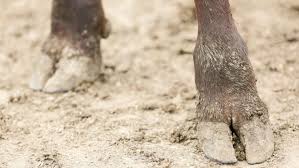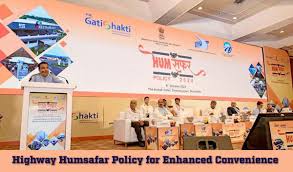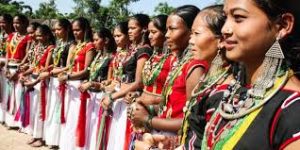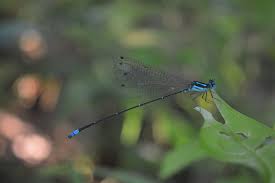Today’s Current Affairs: 11th October 2024 for UPSC IAS exams, State PSC exams, SSC CGL, State SSC, RRB, Railways, Banking Exam & IBPS, etc
Table of Contents
Footrot Disease:

The footrot disease is killing the sheep and goats of Gaddi shepherds in Himachal Pradesh.
- Footrot Disease is a highly contagious disease affecting the interdigital (between the toes) tissue of ruminants.
- It is one of the most common causes of lameness in cattle and sheep and can result in serious economic loss.
- Once present in a herd/flock, footrot can be very difficult to control.
- It is caused by the Dichelobacter nodosus bacteria in association with a number of other bacteria.
- Feet infected with D. nodosus serves as the source of infection for other cattle by contaminating the environment.
- Infectious agents gain entry through the skin as a consequence of injury caused by sharp pieces of stone, metal, wood, stubble, or thorns.
- Footrot tends to be seasonal, with the highest incidence occurring during the wet seasons.
- Symptoms: Expression of virulent footrot disease includes:
- chronic and severe lesions
- lameness
- loss of production
- death, in severe cases.
- The interdigital tissue should be cleaned, debrided, and disinfected.
- One antibiotic treatment is usually adequate if administered on the first day of the disease.
- Recovery is generally observed in three to four days.
Ardetosaurus Viator:

Paleontologists have identified a new genus and species of sauropod dinosaur named Ardetosaurus viator from a semi-articulated specimen found in the 1990s in northern Wyoming, the United States.
- Ardetosaurus viator is a newly discovered species of dinosaur that roamed Earth during the Late Jurassic epoch, some 150 million years ago.
- It was a type of diplodocid, a family of sauropod dinosaurs that includes some of the longest creatures ever to walk the planet.
- Sauropods were the largest of all dinosaurs and the largest land animals that ever lived.
- They existed for a minimum of 135 million years, from the beginning of the Jurassic 201 million years ago to the end of the Cretaceous, 66 million years.
- Sauropod remains have been found on every continent, except Antarctica.
- They are best recognized by their long necks and long tails, and their success can be attributed to their extreme size, an intricate bird-like air sac system, as well as their unique feeding and digestive strategies and oviparous reproduction.
- One of the most recognizable sauropod families is Diplodocidae.
- These sauropods are generally characterized by their extremely long necks and even longer tails.
- Diplodocids are known from North and South America, Europe, and Africa.
Humsafar Policy:

Aimed at providing wayside amenities along national highways, the Union Road Transport Minister recently launched ‘Humsafar Policy.
- Humsafar Policy is a comprehensive initiative aimed at enhancing facilities along India’s national highways.
- The policy seeks to improve the convenience, safety, and comfort of highway travelers by providing a wide range of services at key locations along the road network.
- Under this policy, rest stops equipped with essential amenities like clean washrooms, food courts, parking spaces, and first-aid services will be developed across major highways.
- Dedicated rooms for baby care, equipped with changing tables and other essentials, will be provided for families travelling with young children.
- It includes provisions for creating multi-utility spaces at regular intervals to cater to the diverse needs of travelers.
- These spaces will feature fuel stations, Electric Vehicle (EV) charging points, convenience stores, and other roadside services that are expected to reduce driver fatigue and improve overall road safety.
- Dormitories will be introduced at fuel stations to provide short-term accommodation for truck drivers, travellers, and those requiring a rest break during long-distance travel.
- Accessibility will be a key focus, with wheelchair provisions made available for differently-abled travellers.
- The initiative also aims to promote sustainability by incorporating green technologies, such as solar-powered facilities and EV infrastructure, contributing to India’s environmental goals.
Fifth LUPEX Mission:

The National Space Commission, India’s apex body on space missions, cleared the fifth lunar mission, the Lunar Polar Exploration Mission.
- LUPEX Mission is a collaborative mission between the Indian Space Research Organisation (ISRO) and the Japan Aerospace Exploration Agency (JAXA).
- Objective is to explore the moon’s southern polar region, investigating the presence of water and other elements, potentially in the form of surface ice.
- It aims to showcase innovative surface exploration technologies. The special focus is on vehicular transport and lunar night survival.
- It features both a lander and a rover.
- JAXA is responsible for developing and operating the rover, and ISRO for developing and operating the lander that will carry the rover.
- The rover will drive on its own to search for areas where water is likely to be present and sample the soil by digging into the ground with a drill.
- The plan is to acquire data by analyzing the collected samples in detail with observation equipment mounted on the rover.
- The rover will be equipped with instruments for measuring the water content of regolith (lunar sand), drilling, and sampling, as well as with other world-first and world-leading technologies for the driving system and batteries.
- The rover will carry not only the instruments of ISRO and JAXA but also those of the US space agency NASA and the European Space Agency (ESA).
- The mission is scheduled to launch in 2025.
Climate Risk Information System:

The Reserve Bank of India proposes to create a data repository namely, the Reserve Bank Climate Risk Information System (RB-CRIS)
- Climate Risk Information System will bridge the gap in climate-related data that is currently available in a fragmented manner.
- Presently the available climate-related data is characterised by various gaps such as fragmented and varied sources, differing formats, frequencies and units.
- It will comprise of two parts
- The first part will be a web-based directory, listing various data sources, (meteorological, geospatial, etc.) which will be publicly accessible on the RBI website.
- The second part will be a data portal comprising of datasets (processed data in standardised formats).
- The RBI plans a phased launch of RB-CRIS starting with the web-based directory, followed by a gradual introduction of the data portal for regulated entities to ensure smooth adaptation.
- It is crucial for regulated entities to undertake climate risk assessments to ensure stability of their balance sheets and that of the financial system.
- On February 28, 2024, RBI issued draft guidelines for a ‘Disclosure Framework on Climate-Related Financial Risks,’ requiring Regulated Entities (REs) to disclose information across four key areas: governance, strategy, risk management and metrics and targets.
- The framework aims to inform stakeholders—such as regulators, investors, and customers—about the climate-related risks faced by REs and their strategies for addressing these issues.
Tharu Tribe : In News

The Pradhan Mantri Awas Yojana (PMAY) homes bring smiles to women of the Tharu tribe in the Kheri district near the Indo-Nepal border.
- Tharu Tribe is one of the indigenous groups living in the Terai plain on the Indo-Nepal border.
- They live in both India and Nepal.
- In the Indian terai, they live mostly in Uttarakhand, Uttar Pradesh and Bihar.
- In 1967, this tribe was documented as a Scheduled Tribe by the Government of India.
- They have their own language called Tharu or Tharuhati, a language of the Indo-Aryan subgroup of the Indo-Iranian group of the Indo-European family.
- Most Tharu practice agriculture, raise cattle, hunt, fish, and collect forest products.
- Most of their food involves rice, lentils, and vegetables.
- They build their homes from bamboo and mud.
- Despite their patrilineal social system, women have property rightsgreatly exceeding those recognized in Hindu society.
- Tharu marriages are patrilocal within the tribe.
- A common feature of the Tharu community is the joint family system of living in long houses.
- Tharus live in compact villages, usually in the middle of a forest clearing. Each village is governed by a council and a headman.
Agasthyamalai Bambootail:

A group of researchers recently discovered a new species of damselfly, Agasthyamalai Bambootail, from Manjadininnavila in Thiruvananthapuram district, Kerala.
- Agasthyamalai Bambootail is a new species of damselfly.
- It is a rare species belonging to the group of bambootails, so named because of their long cylindrical abdomen resembling a bamboo stalk.
- It was discovered from the Agasthyamalai landscape of Western Ghats.
- The only other species in this genus is the Malabar Bambootail (Melanoneura bilineata) which is found in the Coorg-Wayanad landscape of the Western Ghats.
- The members of this genus can be separated from other bambootails by the absence of the anal bridge vein in their wings.
- This genus of damselflies has long black bodies with brilliant blue markings.
- The new species differs from the Malabar Bambootail in the structure of prothorax, anal appendages, and secondary genitalia.
National Maritime Heritage Complex:

The Union Cabinet recently approved the development of the National Maritime Heritage Complex (NMHC) in Lothal, Gujarat.
- Under the Sagarmala programme, the Ministry of Ports, Shipping, and Waterways is developing the NMHC, a world-class facility at Lothal, Gujarat.
- NMHC is set to become an international tourist destination, showcasing India’s maritime heritage from ancient to modern times through an edutainment approach utilizing the latest technology.
- The project will be completed in phases:
- Phase 1A will have an NMHC museum with 6 galleries, which also includes an Indian Navy & Coast Guard gallery envisaged to be one of the largest in the country with external naval artifacts, a replica model of Lothal township surrounded by an open aquatic gallery, and a jetty walkway.
- Phase 1B will have NMHC museum with 8 more galleries, Light house museum which is planned to be the world’s tallest, Bagicha complex (with a car parking facility for about 1500 cars, a food hall, a medical centre, etc.).
- Phase 2 will have Coastal States Pavilions (to be developed by respective coastal states and union territories), Hospitality Zone (with maritime theme eco resorts and museuotels), Recreation of real-time Lothal City, Maritime Institute and hostel and 4 theme-based parks (Maritime & Naval Theme Park, Climate Change Theme Park, Monuments Park, and Adventure & Amusement Park).
- Phases 1A and 1B of the project are to be developed in Engineering, Procurement and Construction (EPC) mode and Phase 2 of the project will be developed through land subleasing/ PPP to establish NMHC as a world-class heritage museum.
- A separate society will be set up for the development of future phases, to be governed by a Governing Council headed by the Minister of Ports, Shipping and Waterways under the Societies Registration Act, 186
- This society will manage the implementation and operation of the NMHC.
INS Nirdeshak:

The Garden Reach Shipbuilders and Engineers (GRSE) Ltd delivered INS Nirdeshak to the Indian Navy.
- INS Nirdeshak is the second in a series of four Survey Vessels (Large) being built by the Garden Reach Shipbuilders and Engineers.
- It displaces about 3400 tons and overall length is 110 meters. It can achieve speeds in excess of 18 knots.
- It is propelled by two marine diesel engines combined with fixed-pitch propellers.
- It was built using ‘Integrated Construction’ technology. This was in compliance with applicable provisions and regulations of the Classification Society (IRS).
- It is fitted with state-of-the-art hydrographic equipment such as data acquisition and processing systems, autonomous underwater vehicles, remotely operated vehicles, DGPS long-range positioning systems, digital side scan sonar, etc.
- It has an indigenous content of over 80% by cost.
- The delivery of Nirdeshak is a tribute to the collaborative efforts of a large number of stakeholders, MSMEs and the Indian industry in enhancing the maritime prowess of the nation in the Indian Ocean Region.
Caracal (Henotaro) Breeding And Conservation Center:

The Gujarat government has announced the establishment of a Caracal (Henotaro) Breeding and Conservation Center in the Chadva Rakhal region of Kutch, with a budget allocation of ₹10 crore.
- Caracal is an elusive, primarily nocturnal animal which has traditionally been valued for its litheness and extraordinary ability to catch birds in flight.
- In India, it is called siya gosh, a Persian name that translates as ‘black Ear’.
- They typically use abandoned porcupine burrows and rock crevices for maternal dens but can be found with their young in dense vegetation.
- They live in small herds and their shy and elusive nature makes them difficult to spot in the wild.
- They live in woodlands, savannahs and in scrub forests.
- The most suitable habitat for caracals in Rajasthan, Gujarat and Madhya Pradesh is located in Kutch, the Malwa Plateau, the Aravalli hill range and the Bundelkhand region,
- It is found in several dozen countries across Africa, the Middle East, Central and South Asia.
- Large-scale hunting, illegal trading and loss of natural habitats are considered significant threats to the species.
- Conservation status IUCN: Least concern
- The Wild Life (Protection) Act, 1972: Schedule I
DigiLocker Partners with UMANG App for Seamless Access to Government Services:
DigiLocker, a secure cloud-based platform for document storage and verification, has integrated with the UMANG app to enhance access to various government services. This collaboration aims to simplify citizen interactions with the government, enabling users to manage multiple services through a single platform.
Living Planet Report 2024:

The Living Planet Report 2024 revealed that the average size of monitored wildlife populations has decreased by 73 per cent since 1970.
Highlights of the Living Planet Report 2024
- The sharpest decline is reported in freshwater ecosystems at 85%, followed by terrestrial ecosystems at 69% and marine ecosystems at 56%.
- Latin America and the Caribbean, where populations have dropped by 95 per cent
- Africa: 76 % decline.
- Asia-Pacific region: 60 % decline.
- Central Asia: 35% decline
- North America: 39 % decline.
- Major threats to wildlife include Habitat loss, overexploitation, climate change, pollution, invasive species, and diseases, which were the dominant drivers of the decline of wildlife.
- Habitat loss was driven by unsustainable agriculture, fragmentation, logging, mining, to name a few causes.
- Ongoing mass coral reef bleaching, affecting over 75 per cent of the world’s reefs, the Amazon rainforest, the collapse of the subpolar gyre and the melting of the Greenland and West Antarctic ice sheets are all nearing critical tipping points.
- More than half of the United Nations-mandated Sustainable Development Goals for 2030 are unlikely to meet their targets, with 30 per cent of them either already missed or worse off than their 2015 baseline.
Nihon Hidankyo Organization Honored with the 2024 Nobel Peace Prize:
The Norwegian Nobel Committee has decided to award the Nobel Peace Prize for 2024 to the Japanese organization Nihon Hidankyo. This grassroots movement of atomic bomb survivors from Hiroshima and Nagasaki, also known as Hibakusha, is receiving the Peace Prize for its efforts to achieve a world free of nuclear weapons
2024 Nobel Prize in Literature:
The 2024 Nobel Prize in Literature was awarded to South Korean author Han Kang for her “intense poetic prose” that explores historical traumas and human fragility. This marks a shift from recent Europe-centric winners, with the Swedish Academy recognizing her innovation in contemporary prose.




